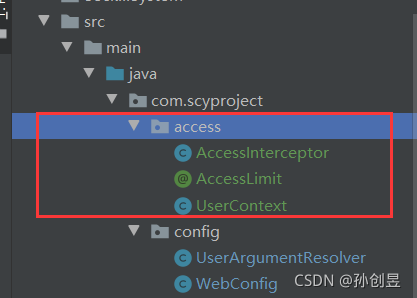隐藏地址+图形验证码
目的
这么做主要是为了防止客户端提前拿到接口地址,在秒杀开始的时候直接调用秒杀接口。
思路
本次实验做法:/getPath获取秒杀链接,之后访问新链接进行秒杀。getPath中要验证图形验证码的结果是否正确。
本次实验缺点:因为真正的秒杀地址为/miaosha+{/getPath获取的data},仍然可以通过get请求获得真正秒杀地址。
更好的做法:调用/getPath接口可以返回一个页面的url,让浏览器跳转到这个新的url页面,新的页面才是真正的秒杀页面。
实现
获取图形验证码图片请求
@RequestMapping(value="/verifyCode", method=RequestMethod.GET)
@ResponseBody
public Result<String> getMiaoshaVerifyCod(HttpServletResponse response,MiaoshaUser user,
@RequestParam("goodsId")long goodsId) {
if(user == null) {
return Result.error(CodeMsg.SESSION_ERROR);
}
try {
BufferedImage image = miaoshaService.createVerifyCode(user, goodsId);
OutputStream out = response.getOutputStream();
ImageIO.write(image, "JPEG", out);
out.flush();
out.close();
return Result.success("获取验证码成功");
}catch(Exception e) {
e.printStackTrace();
return Result.error(CodeMsg.MIAOSHA_FAIL);
}
}
图片生成,把图片运算结果存入redis。
public BufferedImage createVerifyCode(MiaoshaUser user, long goodsId) {
if(user == null || goodsId <=0) {
return null;
}
int width = 80;
int height = 32;
BufferedImage image = new BufferedImage(width, height, BufferedImage.TYPE_INT_RGB); //该图像具有整数像素的 8 位 RGB 颜色
Graphics g = image.getGraphics();
g.setColor(new Color(0xDCDCDC));
g.fillRect(0, 0, width, height);
g.setColor(Color.black);
g.drawRect(0, 0, width - 1, height - 1);
Random rdm = new Random();
for (int i = 0; i < 50; i++) {
int x = rdm.nextInt(width);
int y = rdm.nextInt(height);
g.drawOval(x, y, 0, 0);
}
// generate a random code
String verifyCode = generateVerifyCode(rdm);
g.setColor(new Color(0, 100, 0));
g.setFont(new Font("Candara", Font.BOLD, 24));
g.drawString(verifyCode, 8, 24);
g.dispose();
//把验证码存到redis中
int rnd = calc(verifyCode);
redisService.set(MiaoshaKey.getMiaoshaVerifyCode, user.getId()+"-"+goodsId, rnd);
//输出图片
return image;
}
private static int calc(String exp) {
try {
ScriptEngineManager manager = new ScriptEngineManager();
ScriptEngine engine = manager.getEngineByName("JavaScript");
return (Integer)engine.eval(exp);
}catch(Exception e) {
e.printStackTrace();
return 0;
}
}
private static char[] ops = new char[] {
'+', '-', '*'};
private String generateVerifyCode(Random rdm) {
int num1 = rdm.nextInt(10);
int num2 = rdm.nextInt(10);
int num3 = rdm.nextInt(10);
char op1 = ops[rdm.nextInt(3)];
char op2 = ops[rdm.nextInt(3)];
String exp = ""+ num1 + op1 + num2 + op2 + num3;
return exp;
}
http请求获取path。
@RequestMapping(value="/getPath", method=RequestMethod.GET)
@ResponseBody
public Result<String> getMiaoshaPath(HttpServletRequest request, MiaoshaUser user,
@RequestParam("goodsId")long goodsId,
@RequestParam(value="verifyCode", defaultValue="0")int verifyCode) {
if(user == null) {
return Result.error(CodeMsg.SESSION_ERROR);
}
boolean check = miaoshaService.checkVerifyCode(user, goodsId, verifyCode);
if(!check) {
return Result.error(CodeMsg.REQUEST_ILLEGAL);
}
String md5Str = MD5Util.md5(UUIDUtil.uuid() +"123456");
redisService.set(MiaoshaKey.getMiaoshaPath,""+user.getId()+"_"+goodsId,md5Str);
return Result.success(md5Str);
}
秒杀接口
@RequestMapping(value="/{pathParam}/do_miaosha", method=RequestMethod.POST)
@ResponseBody
public Result<Integer> miaosha(Model model,MiaoshaUser user,
@RequestParam("goodsId")Long goodsId,
@PathVariable("pathParam") String pathParam ) {
if(user == null) {
return Result.error(CodeMsg.SESSION_ERROR);
}
//验证path
boolean check = miaoshaService.checkPath(user, goodsId, pathParam);
if(!check){
return Result.error(CodeMsg.REQUEST_ILLEGAL);
}
//验证正确进行秒杀
}
限流防刷

定义注解AccessLimit ,这样就可以在需要限流的接口上@AccessLimit(seconds = 3,maxCount = 5,needLogin = true)就可以对下面的http请求进行限制:3秒内改用户最多请求5次。
@Retention(RUNTIME)
@Target(METHOD)
public @interface AccessLimit {
int seconds();
int maxCount();
boolean needLogin() default true;
}
定义ThreadLocal线程内保存用户信息。
public class UserContext {
private static ThreadLocal<MiaoshaUser> userHolder = new ThreadLocal<MiaoshaUser>();
public static void setUser(MiaoshaUser user) {
userHolder.set(user);
}
public static MiaoshaUser getUser() {
return userHolder.get();
}
}
定义拦截器
@Service
public class AccessInterceptor extends HandlerInterceptorAdapter {
@Autowired
MiaoshaUserService userService;
@Autowired
RedisService redisService;
@Override
public boolean preHandle(HttpServletRequest request, HttpServletResponse response, Object handler)
throws Exception {
if(handler instanceof HandlerMethod) {
//获取用户信息
MiaoshaUser user = getUser(request, response);
UserContext.setUser(user);
//如果无AccessLimit注解,直接返回true
HandlerMethod hm = (HandlerMethod)handler;
AccessLimit accessLimit = hm.getMethodAnnotation(AccessLimit.class);
if(accessLimit == null) {
return true;
}
//根据需求生成key
int seconds = accessLimit.seconds();
int maxCount = accessLimit.maxCount();
boolean needLogin = accessLimit.needLogin();
String key = request.getRequestURI();
if(needLogin) {
if(user == null) {
render(response, CodeMsg.SESSION_ERROR);
return false;
}
key += "_" + user.getId();
}
AccessKey ak = AccessKey.withExpire(seconds);
//验证时间,累加
Integer count = redisService.get(ak, key, Integer.class);
if(count == null) {
redisService.set(ak, key, 1);
}else if(count < maxCount) {
redisService.incr(ak, key);
}else {
render(response, CodeMsg.ACCESS_LIMIT_REACHED);
return false;
}
}
return true;
}
private void render(HttpServletResponse response, CodeMsg cm)throws Exception {
response.setContentType("application/json;charset=UTF-8");
OutputStream out = response.getOutputStream();
String str = JSON.toJSONString(Result.error(cm));
out.write(str.getBytes("UTF-8"));
out.flush();
out.close();
}
private MiaoshaUser getUser(HttpServletRequest request, HttpServletResponse response) {
String paramToken = request.getParameter(MiaoshaUserService.COOKI_TOKEN_NAME);
String cookieToken = getCookieValue(request, MiaoshaUserService.COOKI_TOKEN_NAME);
if(StringUtils.isEmpty(cookieToken) && StringUtils.isEmpty(paramToken)) {
return null;
}
String token = StringUtils.isEmpty(paramToken)?cookieToken:paramToken;
return userService.getByToken(response, token);
}
private String getCookieValue(HttpServletRequest request, String cookiName) {
Cookie[] cookies = request.getCookies();
if(cookies == null || cookies.length <= 0){
return null;
}
for(Cookie cookie : cookies) {
if(cookie.getName().equals(cookiName)) {
return cookie.getValue();
}
}
return null;
}
}